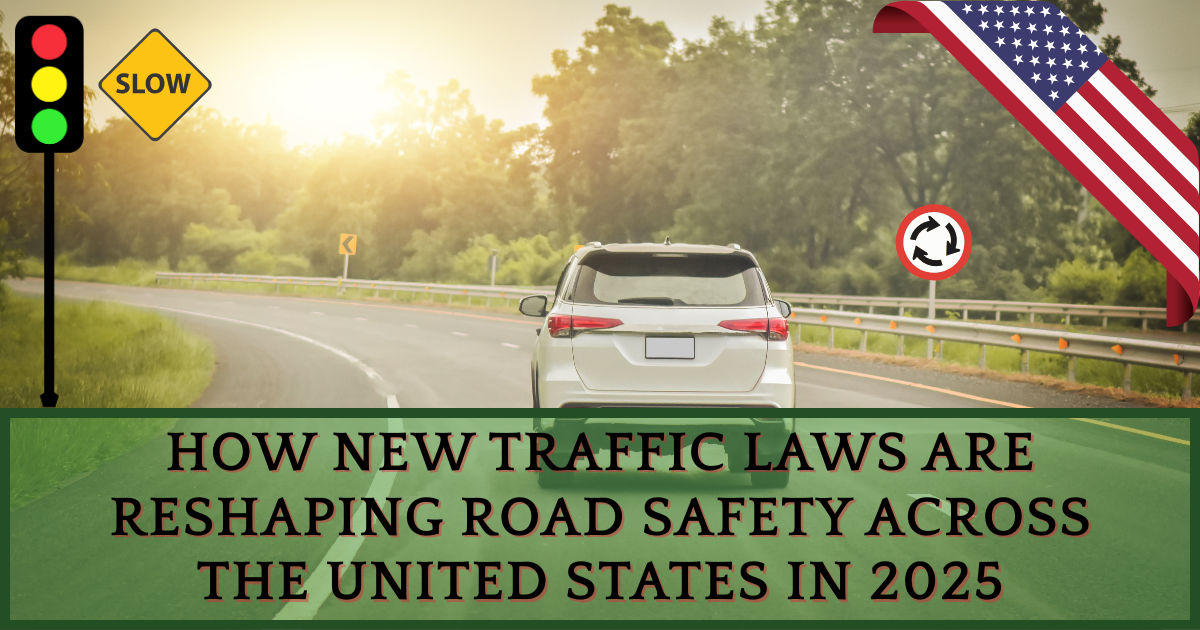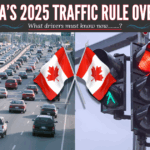How new traffic laws are reshaping road safety across the United States in 2025. The government of the United States has made many rules and regulations to ensure the safety of people walking or driving on roads. These rules were established in 2025 to avoid accidents. Certain actions have been taken to protect the drivers, pedestrians, and cyclists who use the streets and highways every day. To know more about the topic “How new traffic laws are reshaping road safety across the United States in 2025,” read the complete article.
How New Traffic Laws are Reshaping Road Safety Across the United States in 2025
The wave of new driving rules was faced by the United States drivers in August 2025. Road safety is becoming a rapidly growing priority. Governments and organizations worldwide leveraged advanced analytics, artificial intelligence, and real-time monitoring to increase traffic safety. The integration of AI, telematics, and behavioral analytics helped in predicting and preventing road incidents, shifting the focus from reactive to proactive safety measures. This approach not only improved enforcement but also guided infrastructure improvements, driver education, and policy decisions.

Safety is at the core of every program, every project, and every partnership set forward by the U.S. Department of Transportation. Most people are distracted while driving and this is the major cause of accidents. The NRSS was initiated in January 2022 to take a Department-wide approach in addressing the safety crisis that kills and injures thousands of Americans every year. The state has responded to enhance safety concerns, technological innovations, and climate policy goals. The new traffic rules of the The US will reshape the way American citizens interact with the road.
New Traffic Laws for Road Safety Across the United States in 2025
These new laws are designed to enhance work zone safety for roadway workers as well as the movement of motorists traveling through work zones using complete management strategies to guarantee safety while minimizing effects and traffic disruptions to the traveling public. These updated rules will add safety and mobility performance measures for use by states when developing their zone work policies.
Commercial Vehicle Safety (FMCSA)
The federal Motor Carrier Safety Administration (FMCSA) is implementing several key regulations for commercial vehicles in 2025:
Speed Limiter Mandate
The NRSS identified speed as a huge factor in fatal crashes and speed management as a main tool to reduce serious injuries and fatalities. NHTSA is suggesting to establish a new Federal motor vehicle safety standard (FMVSS) requiring that each new multipurpose passenger vehicle, truck, bus, and school bus with a gross vehicle weight rating (GVWR) of more than 11,793.4 kilograms (26,000 pounds) be equipped with a speed limiting device.
Driver Qualification and Identification
There are certain rules that the driver has to meet to be qualified. By October 1, 2025, a complete switch from MC (Motor Carrier) numbers to USDOT numbers as the primary identifier for all carriers is anticipated, along with updates to driver qualification systems. There are no improved CDL reviews for non-domiciled drivers and updated physical qualification standards for drivers with epilepsy.
English Proficiency for Truck Drivers
The new rules are in line with the president’s April 2025 Executive Order to strengthen highway safety by ensuring that all commercial drivers are properly qualified and proficient in English, our national language.
NHTSA Regulations and Frameworks
The National Highway Traffic Safety Administration (NHTSA) is focusing on several areas:
Seatbelt Warning Systems
The U.S. Department of transportation’s National Highway Traffic Safety Administration today finalized a rule requiring seat belt use warnings for rear seats and enhanced warnings for driver and front passenger seats, a major action aimed at increasing seat belt use and preventing injury and death in a crash.
Distracted Driving
These guidelines do not alter the driver’s primary responsibility to guarantee the safe operation of a vehicle as governed by the state laws under which it is being operated, both while driving and when interacting with in-vehicle electronic devices. This includes following all traffic laws, obeying traffic control devices, and driving in a safe manner under all operating conditions.
Road to Zero Grants
Road to Zero (RTZ) promotes the Safe System Approach to preventing roadway deaths, which recognizes that all of the following factors are necessary to save lives: Safer People, Safer Vehicles, Safer Speeds, Safer Roads, and Post-Crash Care. Moreover, RTZ’s work is guided by the following Safe System principles:
- Death and serious injuries are unacceptable
- Humans make mistakes
- Humans are vulnerable
- Responsibility is shared
- Safety is proactive
- Redundancy is crucial



